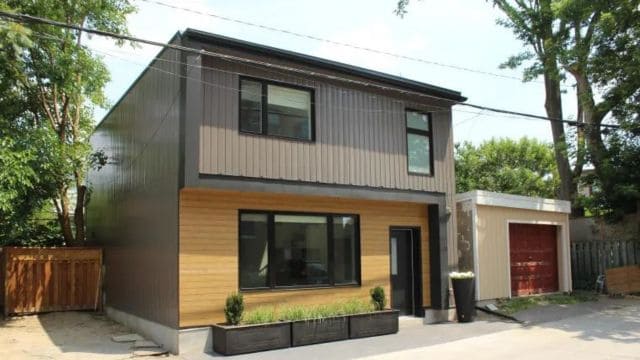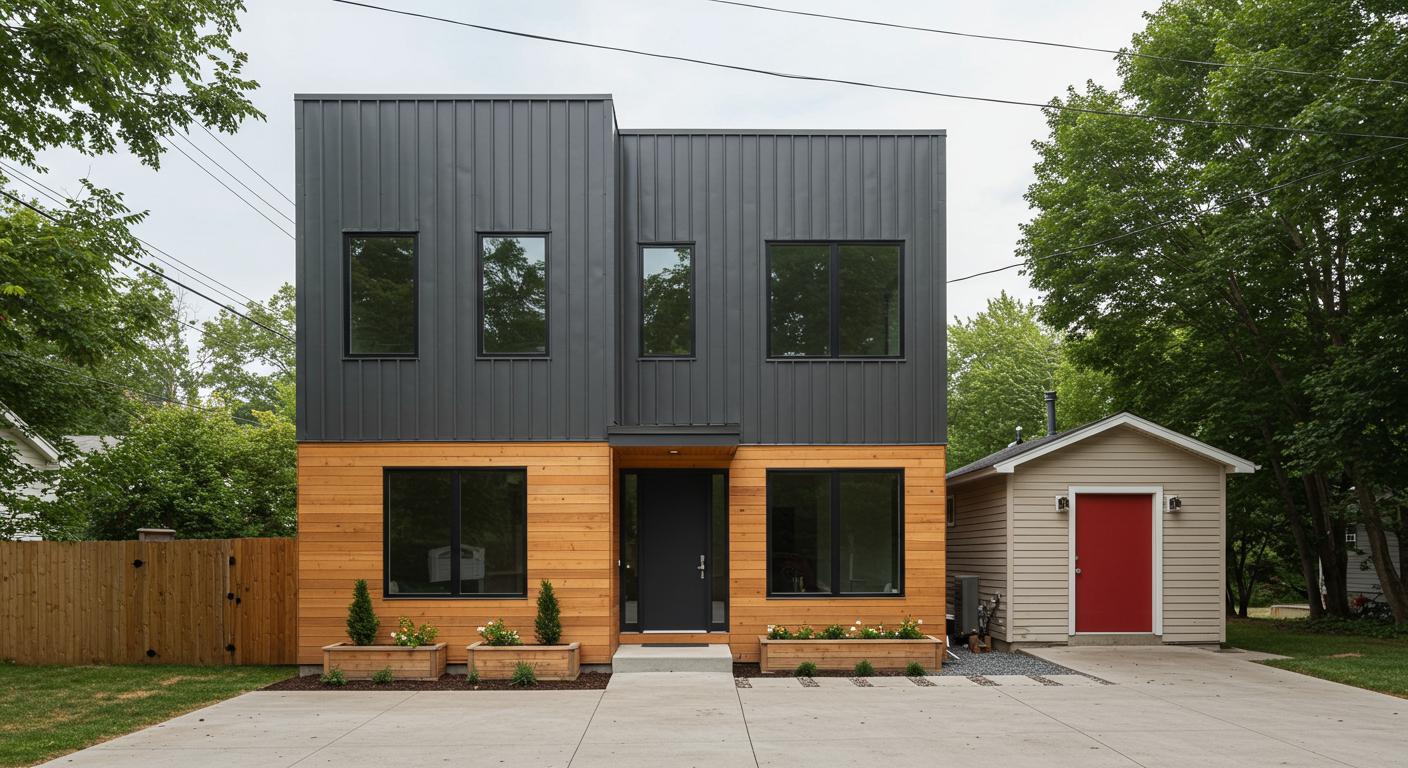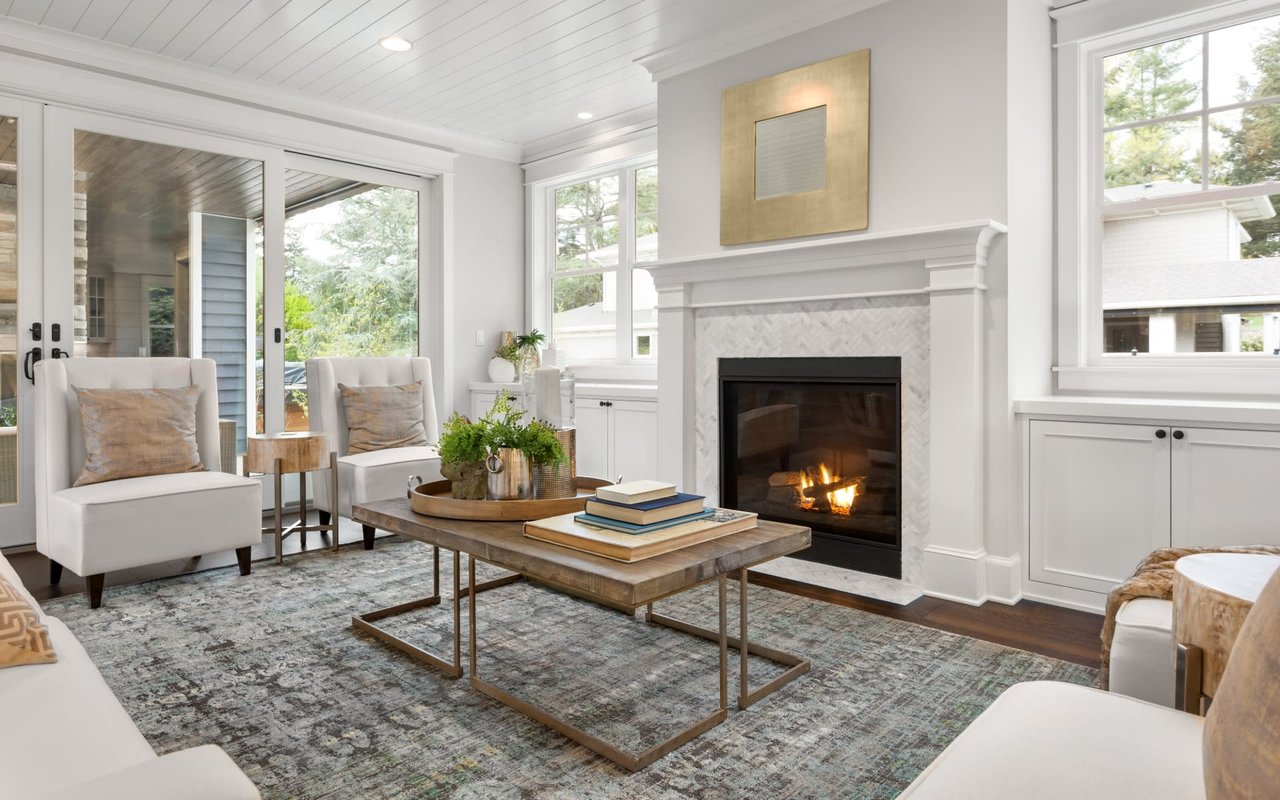In recent years, the housing market in Ontario has seen a significant transformation, with an increasing interest in alternative housing solutions like garden suites and laneway houses. These innovative housing options provide more flexibility for homeowners, offer potential rental income, and help address the ongoing housing crisis. However, despite their rising popularity, many people remain confused about the differences between the two.
If you’re considering adding a secondary dwelling to your property, understanding the distinctions between garden suites and laneway houses is crucial. In this comprehensive guide, we’ll explore everything you need to know about these two housing types, helping you decide which option is best for your needs.
Click here to follow my Instagram.
Click here to follow my Facebook.
Click here to visit our blog page!
Email: [email protected]
Phone: (416) 220 7045
Address: 55 Director Ct. Woodbridge ON., L4L 4S5
What Are Garden Suites?
Garden suites are small, self-contained residential units located on the same lot as a primary dwelling. Typically, these suites are separate structures built in the backyard, providing private living spaces that include a bedroom, bathroom, kitchen, and living area. Unlike traditional guest houses, garden suites are fully equipped for independent living and are often used to accommodate aging family members, provide rental income, or offer a private space for guests.
The Rise of Garden Suites in Ontario
Garden suites have gained significant traction in Ontario, especially in urban areas where space is at a premium. Homeowners are increasingly drawn to the idea of utilizing their backyards to create additional living spaces, either for personal use or as a source of rental income. The Ontario government has also been supportive of this trend, recognizing garden suites as a viable solution to the housing shortage.
Key Features of Garden Suites
● Independent Living: Garden suites are designed as fully independent living spaces, equipped with all the amenities necessary for comfortable living.
● Privacy: Located in the backyard, garden suites offer a high level of privacy for both the occupants of the main house and the suite.
● Flexibility: These units can serve multiple purposes, from housing aging parents to generating rental income.
● Customization: Homeowners have significant flexibility in designing garden suites to match their preferences and the aesthetic of their primary home.
What Are Laneway Houses?
Laneway houses are another innovative housing solution that has become increasingly popular in Ontario. These are self-contained residential units constructed on pre-existing lots that abut a laneway. Unlike garden suites, which are typically located in the backyard, laneway houses are built adjacent to or above garages on the rear of properties with direct access to a laneway.
The Emergence of Laneway Houses in Ontario
Laneway houses have emerged as a creative way to maximize the use of underutilized land in urban areas. Originally popular in cities like Vancouver, this trend has made its way to Ontario, where laneways are common in many older neighbourhoods. These homes provide an excellent opportunity to increase housing density without altering the character of established neighbourhoods.
Key Features of Laneway Houses
● Urban Integration: Laneway houses seamlessly integrate into the urban fabric, making use of previously neglected spaces.
● Accessibility: With direct access from a laneway, these houses offer unique urban living experiences.
● Versatility: Laneway houses can be used for various purposes, including as rental units, guest houses, or homes for extended family members.
● Sustainability: Building laneway houses often involves revitalizing older, underused areas, contributing to more sustainable urban development.
Key Differences Between Garden Suites and Laneway Houses
While garden suites and laneway houses serve similar purposes, several key differences set them apart. Understanding these differences is crucial for homeowners considering which option might be better suited to their property and needs.
Location on the Property
The most apparent difference between garden suites and laneway houses is their location on the property. Garden suites are typically situated in the backyard, separate from the main house, while laneway houses are built adjacent to or above garages that face a laneway. This difference in location can significantly impact the design, accessibility, and overall appeal of each type of dwelling.
Design and Layout
Garden suites generally have more flexibility in design since they are standalone units with no immediate spatial constraints. On the other hand, laneway houses often have to work within the dimensions of existing structures or laneways, which can limit design options but also create unique architectural opportunities.
Zoning and Regulations
Zoning laws and regulations for garden suites and laneway houses can differ depending on the municipality. Generally, laneway houses are more common in urban areas with established laneways, whereas garden suites may be more prevalent in suburban or rural settings. Understanding local zoning bylaws is essential for determining which option is viable for your property.
Cost Considerations
The cost to build a garden suite or laneway house can vary widely depending on several factors, including design complexity, materials used, and location. Typically, laneway houses can be more expensive due to the additional costs associated with connecting to existing infrastructure like plumbing and electrical systems that may be located far from the main house.
Benefits of Garden Suites in Ontario
Garden suites offer several benefits that make them an attractive option for many homeowners in Ontario.
Aging in Place
One of the primary advantages of garden suites is their ability to facilitate "aging in place." For families with elderly relatives, garden suites provide a comfortable, independent living space close to the main house, allowing seniors to maintain their autonomy while still being near loved ones.
Rental Income
Garden suites can be an excellent source of rental income, helping homeowners offset their mortgage payments or generate extra cash flow. With the increasing demand for affordable rental units in Ontario, garden suites can attract long-term tenants seeking private, self-contained living spaces.
Increased Property Value
Adding a garden suite to your property can significantly increase its market value. Potential buyers are often willing to pay a premium for homes with secondary suites, especially in desirable urban areas where housing is limited.
Environmental Benefits
Garden suites can also contribute to a more sustainable lifestyle. Many homeowners opt for eco-friendly designs and materials, reducing the environmental footprint of their new construction. Moreover, by adding density to existing neighbourhoods, garden suites can help reduce urban sprawl.
Benefits of Laneway Houses in Ontario
Laneway houses also offer several unique benefits, particularly in urban settings.
Urban Revitalization
Building a laneway house can contribute to the revitalization of urban areas. By utilizing previously neglected laneways, homeowners can help transform these spaces into vibrant, livable areas, enhancing the overall appeal of the neighbourhood.
Privacy and Independence
Like garden suites, laneway houses offer privacy and independence for their occupants. These units are ideal for extended family members, such as adult children or elderly parents, who desire proximity to the main house but also value their own space.
Architectural Opportunities
Laneway houses often require creative architectural solutions due to their unique locations. This can lead to innovative designs that maximize space and integrate seamlessly with the surrounding environment. For homeowners who appreciate modern architecture, laneway houses offer a canvas for unique and aesthetically pleasing designs.
Increased Density Without Overcrowding
Laneway houses increase the housing density in urban areas without significantly altering the neighbourhood's character. This makes them an excellent option for cities like Toronto, where there is a need for more housing but also a desire to preserve the historical and architectural integrity of neighbourhoods.
Regulations Governing Garden Suites in Ontario
When considering the construction of a garden suite in Ontario, understanding the applicable regulations is crucial. These regulations can vary significantly depending on the municipality, so it's essential to research local bylaws and consult with municipal planning departments before starting your project.
Zoning and Land Use
Zoning regulations play a significant role in determining whether you can build a garden suite on your property. Most municipalities in Ontario have specific zoning designations that either permit or restrict the construction of secondary dwelling units like garden suites. Generally, properties in residential zones with sufficient lot size and dimensions may qualify for garden suites, but there can be restrictions on the suite’s size, height, and placement on the lot.
Building Permits
Before constructing a garden suite, homeowners must obtain the necessary building permits from their local municipality. This process typically involves submitting detailed plans for the suite, including its design, size, and placement. The municipality will review these plans to ensure they comply with all relevant building codes and zoning bylaws.
Site-Specific Considerations
In some cases, municipalities may impose additional site-specific requirements. For instance, if your property is located in a designated heritage area, you might need to obtain special approvals to ensure that your garden suite’s design is compatible with the historic character of the neighbourhood. Other considerations may include proximity to utilities, environmental concerns, and the impact on neighbors.
Utility Connections
Another important regulatory aspect is the connection of the garden suite to existing utilities, such as water, sewage, and electricity. Municipalities often have specific guidelines regarding how these connections should be made, and homeowners may be required to upgrade their existing infrastructure to accommodate the new unit.
Parking Requirements
Many municipalities in Ontario also have parking requirements for garden suites. Homeowners may need to provide additional on-site parking spaces for the suite's occupants, which could involve expanding an existing driveway or adding a new parking area.
Regulations Governing Laneway Houses in Ontario
Laneway houses are subject to a different set of regulations compared to garden suites. These regulations can also vary depending on the municipality, but there are some commonalities across Ontario.
Zoning and Land Use
As with garden suites, zoning regulations are crucial for determining whether you can build a laneway house on your property. In many Ontario cities, laneway houses are permitted in residential zones that include laneways, but there may be restrictions based on the lot size, the laneway’s width, and the distance from the main house.
Building Permits and Approvals
Obtaining a building permit is a mandatory step before constructing a laneway house. The permit application process typically requires detailed plans that include the design, size, and height of the laneway house, as well as its relationship to the existing structures on the property. The municipality will review these plans to ensure they comply with local building codes and zoning bylaws.
Fire Safety and Accessibility
Fire safety is a critical consideration for laneway houses, particularly because they are often located close to other structures and may have limited access for emergency vehicles. Municipalities may require additional fire safety measures, such as fire-rated walls, sprinkler systems, and accessible pathways for emergency responders.
Utility Connections and Services
Connecting a laneway house to municipal utilities can be more complex than for garden suites, especially if the property’s existing infrastructure is located far from the laneway. Homeowners may need to extend water, sewage, and electrical lines to the new unit, and this can involve significant costs and regulatory approvals.
Parking and Access
Parking requirements for laneway houses can be strict, particularly in dense urban areas where on-street parking is limited. Municipalities may require homeowners to provide one or more off-street parking spaces for the laneway house, which could involve creating new parking areas or reconfiguring existing ones. Additionally, access to the laneway must be maintained for both vehicles and pedestrians.
Cost Considerations for Garden Suites
When planning to build a garden suite in Ontario, understanding the costs involved is essential. The cost of constructing a garden suite can vary widely depending on several factors, including the size of the suite, the materials used, and the location of the property.
Construction Costs
The construction costs of a garden suite are typically the most significant expense. These costs can range from $100,000 to $300,000 or more, depending on the complexity of the design, the quality of materials, and the labor involved. Factors such as the suite’s size, the number of rooms, and the inclusion of custom features like energy-efficient systems or high-end finishes can also influence the final price.
Design and Architectural Fees
Hiring an architect or designer to create a custom garden suite plan can add to the overall cost. While some homeowners may opt for pre-designed plans, others may choose to invest in a unique design that complements their primary residence and meets specific needs. Design and architectural fees can vary, but they typically account for 5% to 15% of the total construction cost.
Permit and Approval Costs
Obtaining the necessary permits and approvals is another important cost to consider. These fees can vary depending on the municipality, but they generally include costs for building permits, zoning applications, and utility connection fees. In some cases, homeowners may also need to pay for environmental assessments or heritage approvals, which can add to the overall cost.
Utility Connection Costs
Connecting the garden suite to existing utilities such as water, sewage, and electricity can involve significant costs, especially if upgrades to the property’s infrastructure are required. These costs can vary depending on the distance from the main house, the complexity of the connections, and the need for any utility upgrades.
Landscaping and Exterior Finishes
The cost of landscaping and exterior finishes should also be factored into the budget. This might include the creation of pathways, driveways, gardens, and outdoor living spaces to enhance the garden suite’s appeal and functionality. Depending on the extent of the landscaping, these costs can add several thousand dollars to the overall budget.
Cost Considerations for Laneway Houses
Building a laneway house in Ontario also involves several cost considerations, many of which are similar to those for garden suites. However, due to the unique nature of laneway houses, there are additional factors that can influence the overall cost.
Construction Costs
The construction costs for a laneway house can range from $150,000 to $400,000 or more, depending on the size, design, and materials used. Because laneway houses are often built in constrained spaces or atop existing structures like garages, the construction process can be more complex and, therefore, more expensive.
Design and Architectural Fees
Given the unique challenges of building a laneway house, hiring an experienced architect or designer is often necessary. The design and architectural fees can be higher than those for garden suites due to the need for custom solutions that address the specific constraints of the laneway location. These fees typically represent 10% to 20% of the total construction cost.
Permit and Approval Costs
As with garden suites, obtaining the necessary permits and approvals for a laneway house is essential. However, due to the often-complex nature of laneway house projects, these costs can be higher. This includes fees for building permits, zoning applications, utility connections, and any special approvals required for fire safety or heritage conservation.
Utility Connection Costs
Connecting a laneway house to municipal utilities can be more challenging and costly than connecting a garden suite. This is particularly true if the property’s existing utility lines are located far from the laneway. The costs for extending water, sewage, and electrical lines can add thousands of dollars to the project’s budget.
Landscaping and Exterior Finishes
The exterior of a laneway house and the surrounding landscaping are crucial to its integration with the neighborhood. Costs associated with these elements can include paving, fencing, garden beds, and outdoor lighting. Additionally, if the laneway house is built atop a garage, the costs of any necessary structural reinforcements or garage upgrades should also be considered.
Design Flexibility and Aesthetics
When it comes to design flexibility and aesthetics, both garden suites and laneway houses offer unique opportunities for customization, but they also come with distinct challenges.
Garden Suites: Design Opportunities
Garden suites generally offer more flexibility in design due to their standalone nature. Homeowners can work with architects to create a space that perfectly suits their needs and complements the existing home. The possibilities are nearly endless, ranging from modern, minimalist designs to cozy, cottage-style structures.
Laneway Houses: Architectural Innovation
Laneway houses, while sometimes more constrained in design due to their placement and the need to fit within existing urban spaces, often inspire architectural innovation. The need to maximize space efficiency while adhering to strict zoning and building codes can lead to creative solutions that make the most of small footprints. For example, split-level designs, rooftop decks, and innovative use of natural light are common in laneway house projects.
Environmental Impact
The environmental impact of both garden suites and laneway houses is an important consideration, especially as homeowners and municipalities become more focused on sustainable development.
Garden Suites: Green Building Potential
Garden suites have the potential to be highly sustainable, particularly when built using eco-friendly materials and energy-efficient systems. Homeowners can incorporate features like solar panels, rainwater harvesting systems, and green roofs to reduce the environmental footprint of their garden suites. Additionally, the relatively small size of garden suites means they typically consume fewer resources and produce less waste than larger homes.
Laneway Houses: Urban Sustainability
Laneway houses contribute to urban sustainability by increasing housing density without expanding the urban footprint. By building on existing lots, homeowners can provide additional housing in areas with established infrastructure, reducing the need for new development on greenfield sites.
Passive House Principles
Both garden suites and laneway houses can be designed to meet Passive House standards, which focus on maximizing energy efficiency and minimizing the need for active heating and cooling systems. This approach not only reduces energy costs but also significantly lowers the environmental impact of these units over their lifespan.
Community and Neighbourhood Integration
Integrating garden suites and laneway houses into existing communities is a crucial factor that can influence both the success of the project and the overall acceptance by neighbours and local residents.
Garden Suites: Enhancing Backyard Spaces
Garden suites are generally more discreet and can be integrated into neighbourhoods without drastically altering the local landscape. Their placement in backyards allows them to blend into the existing environment, often surrounded by gardens, trees, and green spaces, which can enhance the overall aesthetic of the neighbourhood.
Laneway Houses: Revitalizing Underused Areas
Laneway houses have the unique ability to transform underutilized laneways into vibrant, livable spaces. By developing these areas, homeowners contribute to the revitalization of older neighbourhoods, often improving safety, aesthetics, and even property values in the process. However, this transformation requires careful planning to ensure that the new structures fit well within the existing urban fabric.
Community Response and Acceptance
Community acceptance is vital for the successful integration of garden suites and laneway houses. In some cases, neighbors may have concerns about increased density, potential noise, or changes to the neighbourhood's character. Engaging with the community early in the planning process, addressing concerns, and demonstrating the benefits of these housing options can help build support and minimize opposition.
Rental Income Potential
Both garden suites and laneway houses offer excellent opportunities for generating rental income, making them attractive options for homeowners looking to offset their mortgage or increase their cash flow.
Garden Suites: Stable Rental Income
Garden suites can be rented out on a long-term basis to tenants who are looking for a private, self-contained living space. Because these units are separate from the main house, they provide tenants with a higher level of privacy, which can be a significant selling point. In Ontario's competitive rental market, well-designed garden suites can command premium rental rates, particularly in urban areas where housing is in high demand.
Laneway Houses: Urban Rental Appeal
Laneway houses are particularly appealing in urban areas where space is limited, and demand for unique living arrangements is high. The independent access and urban setting of laneway houses make them attractive to a wide range of potential tenants, including young professionals, students, and small families. Additionally, because they are often located in desirable neighbourhoods, laneway houses can generate substantial rental income.
Short-Term Rentals
Both garden suites and laneway houses can also be used for short-term rentals through platforms like Airbnb. This can be particularly lucrative in areas that attract tourists or business travellers. However, homeowners should be aware of local regulations regarding short-term rentals, as some municipalities in Ontario have restrictions on the duration and frequency of such rentals.
Challenges and Limitations
While garden suites and laneway houses offer numerous benefits, they also come with their own set of challenges and limitations that homeowners need to consider.
Zoning and Regulatory Hurdles
One of the primary challenges associated with building garden suites and laneway houses is navigating the complex zoning and regulatory landscape. As mentioned earlier, not all properties are zoned for secondary units, and obtaining the necessary permits and approvals can be time-consuming and costly. Homeowners may also face restrictions related to building size, height, and placement, which can limit their design options.
Construction and Infrastructure Costs
The construction costs for these units can be substantial, particularly if significant upgrades to existing infrastructure are required. For example, extending utilities to a laneway house or upgrading sewage and electrical systems for a garden suite can add thousands of dollars to the overall project cost. Additionally, unforeseen challenges during construction, such as poor soil conditions or structural issues with existing buildings, can lead to cost overruns.
Impact on Privacy and Outdoor Space
Building a garden suite or laneway house can impact the privacy and outdoor space available to the main house. For garden suites, this might mean a reduction in backyard space, which could be a concern for homeowners who value large outdoor areas. Laneway houses, on the other hand, might impact the privacy of both the main house and adjacent properties, especially if the new unit includes windows or balconies that overlook neighbouring yards.
Maintenance and Management
Both garden suites and laneway houses require ongoing maintenance, which can be an additional burden for homeowners. This includes routine tasks like landscaping, cleaning, and minor repairs, as well as more significant responsibilities like managing tenants if the unit is rented out. Homeowners who are not prepared to handle these duties themselves may need to hire property management services, which can add to the overall cost.
Which Is Right for You? Garden Suites or Laneway Houses?
Choosing between a garden suite and a laneway house ultimately depends on your specific circumstances, including your property's characteristics, your budget, and your long-term goals.
Assessing Your Property
The first step in deciding between a garden suite and a laneway house is to assess your property. Consider factors such as the size and layout of your lot, the location of existing structures, and access to utilities. If your property has a large backyard and is not adjacent to a laneway, a garden suite might be the better option. Conversely, if you have a property with a laneway, building a laneway house could be an excellent way to maximize the use of your land.
Budget Considerations
Budget is another critical factor. While both options can be costly, laneway houses often come with higher construction and infrastructure costs due to the need for custom designs and more complex utility connections. If budget constraints are a concern, a garden suite might be the more feasible option.
Long-Term Goals
Finally, think about your long-term goals. If you're looking to create a private living space for a family member or generate rental income, either option could work. However, if you're interested in adding value to your property or contributing to urban revitalization, a laneway house might offer more significant benefits in the long run.
Conclusion
In Ontario, garden suites and laneway houses represent two innovative solutions to the ongoing housing challenges faced by many homeowners. Both options offer unique benefits, from providing additional living space for family members to generating rental income and increasing property value. However, they also come with distinct challenges, including navigating complex zoning regulations, managing construction costs, and maintaining privacy.
Ultimately, the decision between building a garden suite or a laneway house depends on a careful assessment of your property, budget, and long-term goals. By understanding the key differences between these two housing types, you can make an informed decision that meets your needs and enhances your property for years to come






